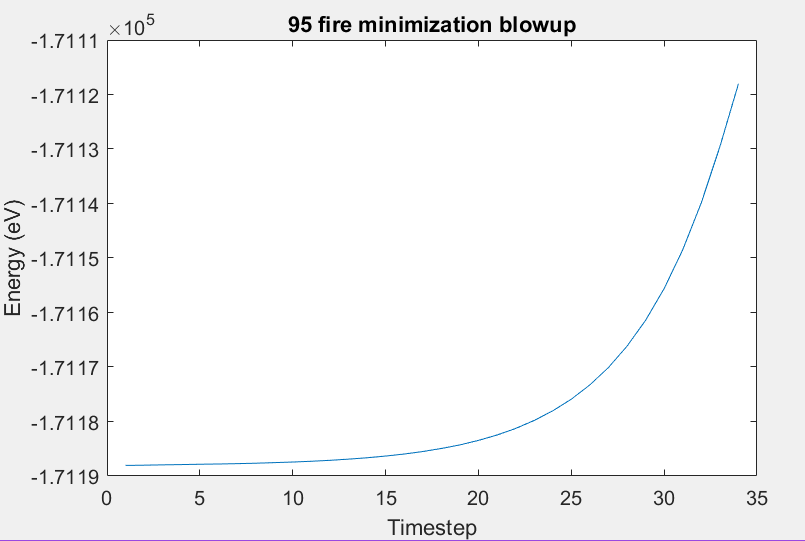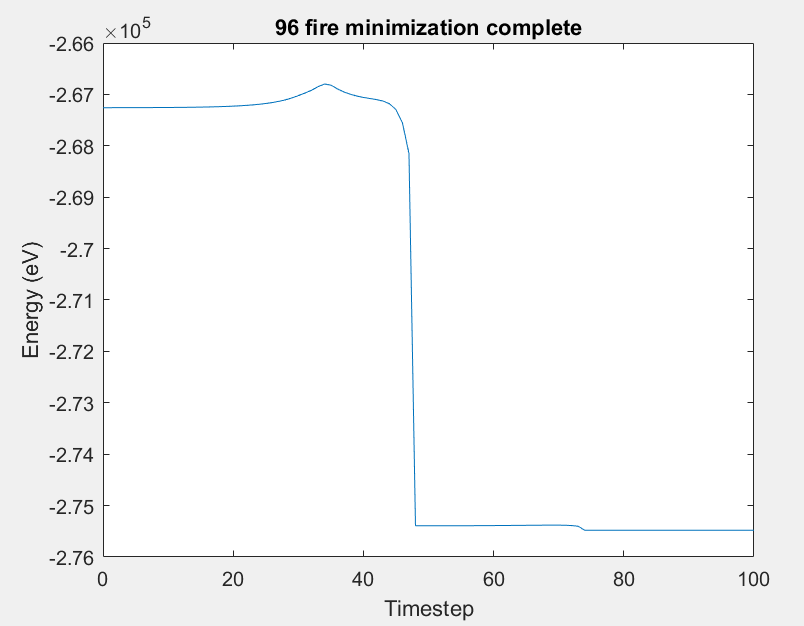Hello there,
I’ve been using lammps for almost a year to run simulations on molybdenum disulfide studying the effects of the addition of biaxial strain in the top monolayer. About a month ago, my code started leading to a blowup while using the fire minimization style whenever I imposed more than 4% compressive stress.
Attached are matlab screenshots of what the fire minimizer normally does (96screenshot), versus what happens when there’s a “blowup” (95screenshot). Even in the successful case, the minimizer leads to increased energy before it decreased very quickly. For the blowup case, the increase in energy occurs up to a point where the output file suddenly starts displaying “nan” for all thermo data until the maximum iterations is reached. From what I can tell from observing dump files, its not as if the atoms are getting so close together that they have a massive force which is causing the energy blowup. Why would the fire minimizer be causing an increase in energy before a decrease? What parameters could I change so that even if this increase must occur, the minimizer will eventually be able to decrease it again as in 96screenshot instead of spitting out nan?
I’ve tried decreasing the timestep a lot (down to 0.000001 femptoseconds but that didn’t work so now I keep it around 0.0001 fs), I’ve tried not reneighboring during the minimization, I’ve tried editing the data files to give the atoms in the top monolayer some extra room to expand in the z direction, but nothing so far has seemed to work. While running the simulation I’ve observed the memory usage and there doesn’t appear to be a shortage of memory. I’ve attached my data files, input script, submit script, potential, I am using a recently compiled version of lammps (my coworker compiled it for me so I’m not sure of the exact date but it was mid march 2017.
Best,
Eric Sirott
data.bottom_layer.953 (29.5 KB)
data.middle.953 (951 KB)
data.top_layer.953 (32.7 KB)
in.953 (901 Bytes)
submit.953 (298 Bytes)
MoS.REBO.set5b (1.62 KB)

